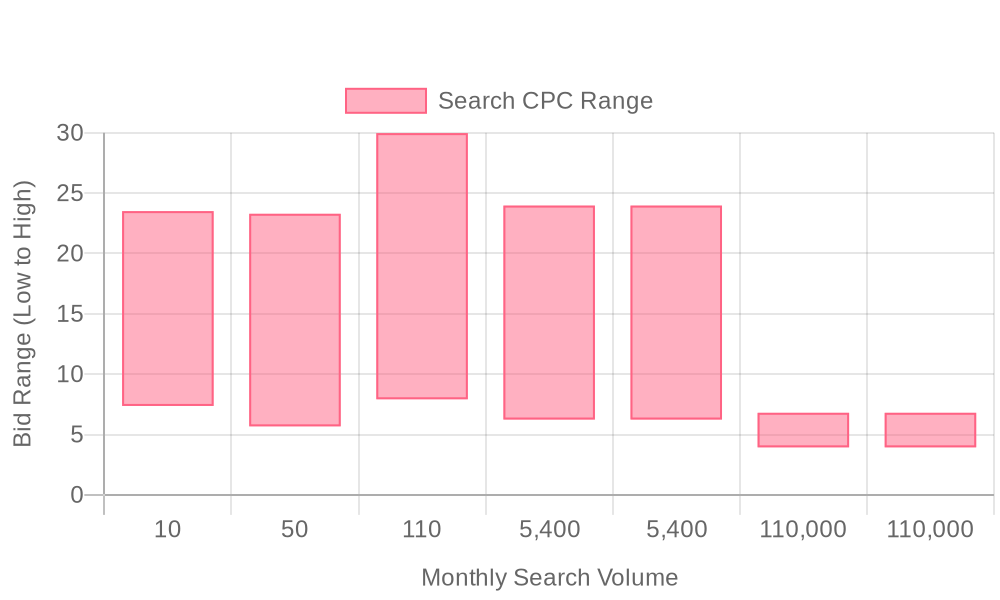
Supercharge your lead generation with a FREE Google Ads audit - no strings attached! See how you can generate more and higher quality leads
Get My Free Google Ads AuditFree consultation

No commitment
Supercharge your lead generation with a FREE LinkedIn Ads audit - no strings attached! See how you can generate more and higher quality leads
Get My Free Google Ads AuditFree consultation

No commitment
Supercharge your lead generation with a FREE Meta Ads audit - no strings attached! See how you can generate more and higher quality leads
Get My Free Google Ads AuditGet My Free LinkedIn Ads AuditGet My Free Meta Ads AuditFree consultation

No commitment
Supercharge your lead generation with a FREE Google Ads audit - no strings attached! See how you can generate more and higher quality leads
Get My Free Google Ads AuditFree consultation

No commitment
In today's marketing landscape, bridging traditional and digital channels is essential for effective advertising. For those in magazine advertising, leveraging Google Ads can effectively connect print and online strategies. This allows advertisers to capture high-intent prospects at critical moments, with precise targeting that complements magazine placements. Integrating these channels not only measures ROI but refines strategies through actionable insights, optimizing reach across both realms. This guide explores how magazine advertisers can harness Google Ads to enhance advertising effectiveness and capture more opportunities.

Modern magazine publishers and advertising teams thrive by embracing a data-driven approach, integrating paid search into a broader digital marketing strategy. This method pinpoints high-value prospects, ensuring that campaign budgets are allocated to audiences with strong conversion potential. For a detailed comparison of Google Ads and traditional advertising methods, explore this analysis of Google Ads vs. traditional advertising to guide your strategy.
To connect with qualified decision-makers, it is essential to move beyond basic demographic filters and leverage advanced audience targeting. By mapping intent-rich keywords to audience segments, magazine advertisers engage users who are actively researching subscriptions, sponsorships, or advertising packages—driving more meaningful interactions and higher lead quality.
Alignment between landing pages and creative assets is critical for success. When ads reflect the editorial voice and visual style of the publication, click-through rates rise and conversion costs drop. Adaptive landing pages that dynamically personalize content based on visitor profile data increase engagement and subscription sign-ups.
Continuous performance optimization ensures that audience lists remain fresh and effective. As leads interact with your campaigns, real-time behavioral data can automatically update segments, helping your team prioritize accounts showing the highest buying intent. This approach minimizes wasted impressions and supports ongoing ad campaign performance improvements.
Integrating cross-channel tactics creates a unified marketing ecosystem for magazine advertising. When CRM systems, analytics platforms, and ad networks work in concert, marketers can identify anonymous website visitors, sync enriched leads into both Google Ads and sales tools, and track conversions across every touchpoint, online and offline. To experience this end-to-end visibility and data-driven growth, get started for free with Sona.

Magazine publishers face a landscape where traditional audience segments are no longer enough to drive meaningful advertising outcomes. Google Ads transforms reach by enabling campaigns to engage users actively searching for specific magazine content, ensuring every impression has a higher intent to convert.
The ability to blend digital and print campaigns creates a unified channel strategy that extends magazine brands into new online spaces. With cross-channel synergy, publishers can use Google Ads to reinforce print placements, retargeting readers who interact with physical issues, and connecting those touchpoints to digital offers. Explore how to measure marketing’s influence on pipeline performance for a more holistic view.
Immediate demand fulfillment is a critical advantage in the magazine sector, where content trends and consumer interests shift rapidly. Google Ads supports agile campaign launches, allowing publishers to capitalize on breaking topics or seasonal features in real time. By leveraging real-time audience data, marketers can reallocate spend toward the audiences and topics proving most responsive, maximizing campaign efficiency.
Additionally, advanced audience building tools help publishers refine their targeting beyond broad demographics. Marketers can pinpoint visitors and identify companies engaging with digital editions, syncing this intelligence back into CRM and advertising platforms for continuous optimization. This dynamic ecosystem ensures that as leads progress through the funnel, campaigns automatically update to reflect new engagement signals, resulting in more personalized messaging and higher conversion rates.
With seamless integration of online and offline conversion tracking, magazine publishers gain a comprehensive view of their advertising effectiveness. This holistic measurement approach captures true ROI, factoring in both new digital subscriptions and in-store purchases driven by coordinated print and online campaigns. The result is a cost-effective advertising strategy tailored for modern magazine publishers seeking measurable impact and sustained growth. To see these results firsthand, get started for free with Sona and unlock actionable insights for your magazine advertising strategy.

Identifying scalable growth opportunities in magazine advertising relies on tapping into vertical-specific insights and precise digital tactics. Publishers and B2B revenue teams achieve measurable gains by aligning campaign strategies with editorial strengths, industry trends, and evolving audience intent. For practical frameworks and inspiration, explore this library of actionable playbooks designed to boost demand generation and marketing operations.
Ready to uncover and act on new advertising opportunities? Get started for free with Sona.

Audience segmentation is essential for magazine publishers looking to maximize digital ad spend and deliver relevant messaging to diverse reader groups. By strategically defining segments such as "long-term subscribers," "casual browsers," and "topic-specific explorers," publishers can create tailored campaigns that resonate with individuals at every stage of engagement. This targeted approach moves beyond broad demographics, leveraging behavioral, contextual, and intent data to drive higher engagement and conversion rates.
Effective segmentation starts with mapping out your most valuable audience clusters. For magazines, this often involves analyzing historical subscriber data, tracking engagement with specific article themes, and layering search intent signals—such as recent queries for "best travel magazine" or "digital fashion subscriptions"—over content affinities. When magazine advertisers align these intent signals with their editorial strengths, campaigns become more relevant, resulting in improved click-through rates and lower acquisition costs.
Organizing ad groups to mirror these audience segments enables tailored messaging and creative for each cohort. For example, an ad group targeting loyal subscribers might highlight exclusive digital-only issues, while a separate group for new visitors could offer introductory discounts or free sample articles. Messaging and calls-to-action should directly address the needs and motivations of each segment, driving users into personalized conversion flows. As these campaigns run, real-time behavioral data can inform dynamic audience updates, ensuring that newly engaged readers or churned subscribers are automatically shifted into relevant retargeting or upsell sequences. For additional tactics and best practices, explore these ways to boost digital magazine subscriptions. This continuous audience refinement helps keep every impression cost-effective.
To close the loop, seamless integration between digital ad platforms and CRM systems is vital. When conversion activities—such as newsletter sign-ups, content downloads, or direct subscription purchases—are tracked and synced back into the CRM, it becomes possible to attribute each lead to its originating audience segment and campaign. This level of attribution not only clarifies campaign ROI but also enriches audience profiles for future targeting. Advanced solutions automate the syncing of enriched leads and audience updates back into platforms like Google Ads and CRM tools, ensuring that revenue teams always have the freshest, most actionable data at their fingertips. To streamline your segmentation and data activation, get started for free with Sona. This unified approach to segmentation and data flow drives more precise targeting, higher conversion rates, and ultimately greater advertising effectiveness for magazine publishers.

| Industry | Keyword | Monthly Search Volume | Competition Level | Low Bid | High Bid |
| Magazine Advertising | local magazines to advertise in | 10 | LOW | 7.37 | 23.51 |
| Magazine Advertising | magazine advertising rates | 50 | LOW | 5.68 | 23.29 |
| Magazine Advertising | local magazine advertising | 110 | MEDIUM | 7.92 | 29.97 |
| Magazine Advertising | magazine advertising | 5400 | LOW | 6.24 | 23.97 |
| Magazine Advertising | magazine ads | 5400 | LOW | 6.24 | 23.97 |
| Magazine Advertising | ad age magazine | 110000 | LOW | 3.94 | 6.8 |
| Magazine Advertising | advertising age magazine | 110000 | LOW | 3.94 | 6.8 |
Magazine publishers and advertising teams gain a direct competitive edge by leveraging keyword strategies that align with the evolving habits of digital readers. Capturing search intent for terms like "magazine subscriptions online," "digital edition magazine," and "advertising in magazines" helps attract audiences who are actively seeking magazine content or exploring advertising opportunities in this space. For further inspiration on boosting digital subscriptions, review these tactics and best practices.
Precision targeting is central to this approach. By researching and balancing keywords with both high search volume and specificity, publishers ensure their campaigns reach users most likely to convert—while efficiently filtering out low-quality traffic, such as those searching for "free magazine PDFs." This approach minimizes wasted spend and enables continuous optimization as audience interests shift or new magazine topics emerge. Explore our actionable playbooks for proven demand generation strategies.
A well-structured keyword plan is the foundation for measurable ROI. Teams can clearly track how digital ad spend impacts key business outcomes, whether that’s new subscriptions, increased engagement, or advertiser interest. Integrating Sona Identification allows marketers to move beyond anonymous site traffic, pinpointing which companies and high-value readers are engaging with their ads. When combined with Sona’s Intent Signals, campaigns dynamically allocate budget to segments showing the strongest purchase or subscription signals, ensuring resources are always focused on the highest converting opportunities.
Keyword strategies further benefit from dynamic audience updates as leads move through the funnel. For example, as a reader transitions from casual browser to newsletter subscriber, the audience criteria automatically adjust, allowing for progressively more personalized retargeting and creative messaging. When campaign data, CRM records, and intent signals are unified, marketing and sales teams can orchestrate highly cost-effective advertising efforts that drive measurable magazine growth and advertiser satisfaction. If you’re ready to put these strategies into action, get started for free with Sona and unlock advanced targeting for your campaigns.
Effective keyword targeting underpins every high-performing magazine advertising campaign. Start by mapping your core magazine themes—whether culinary, business, travel, or lifestyle—into tightly organized keyword clusters. This structure ensures your ads reach readers whose interests align directly with your editorial vision. Incorporate geo-modifiers for regional editions or city-focused content, connecting your ad spend to the most relevant local audiences and increasing engagement rates.
Negative keywords are essential for refining your reach and avoiding wasted budget. By systematically excluding irrelevant queries, you prevent your ads from surfacing to mismatched audiences, which keeps cost-per-click down and boosts the likelihood of genuine subscriptions. Modern marketers using unified audience intelligence can take this further, identifying not just anonymous visitors but the actual companies and individuals engaging with their content. For a detailed comparison of digital and traditional strategies, see this Google Ads vs. traditional advertising overview.
Dynamic, audience-centric ad copy captures attention and drives conversions in the crowded digital publishing space. Integrate topic-specific language and references to your magazine’s unique content pillars directly in headlines and descriptions. Highlight key value propositions—exclusive interviews, special issues, or members-only benefits—to appeal to the interests of discerning readers who expect premium experiences.
Extensions play a pivotal role in establishing authority and trust. Use sitelinks to showcase credentials, such as “Award-Winning Features” or “Editor’s Choice Covers,” and callout extensions to promote time-limited subscription offers. Ad copy performance improves further when you can sync real-time insights from unified audience data, ensuring messaging evolves in sync with user behavior and engagement signals throughout the funnel. Explore more best practices in this Google Ads best practices resource.
High-performing campaigns demand seamless continuity from ad click to landing page. Align each landing page with the corresponding magazine theme or article cluster featured in your ad, creating a natural and engaging transition for visitors. Consistent branding—colors, logos, typography—reinforces recognition and credibility, while clear, direct subscription paths remove friction from the conversion process.
Effective calls-to-action (CTAs), such as “Start Your Free Trial” or “Unlock Premium Content,” should be tailored to both new prospects and returning readers. Leveraging real-time campaign data allows marketers to dynamically customize landing page elements for each audience segment, increasing conversion rates and delivering a more personalized experience. For actionable tips to boost digital magazine subscriptions, see this guide.
Continuous optimization is essential for maximizing campaign efficiency in magazine advertising. Routinely monitor conversion data to identify top-performing keywords, creative assets, and audience segments. Adjust bids based on real-time performance, reallocating budget to the highest-converting channels and minimizing spend on underperformers. Unifying campaign data across print and digital properties enables marketers to bridge gaps in attribution, revealing the full customer journey from first impression to subscription or purchase.
With advanced conversion tracking, both online and offline actions can be measured, allowing for true ROI analysis and more accurate pipeline forecasting. By syncing enriched audiences and CRM records into ad platforms, campaigns adapt dynamically as leads progress through the buying cycle. For a comprehensive look at how ad targeting works, check out this Google Ad Manager overview. Ready to optimize your campaigns? Get started for free with Sona.

Magazine publishers can achieve broader reach and deeper engagement by blending their print and digital strategies within Google Ads campaigns. Maximizing impact requires precise audience segmentation, unified messaging, and channel-specific creative tailored to target readers’ intent and interests.
Continuous refinement of these tactics ensures that magazine advertising remains effective in a rapidly evolving digital environment. By aligning audience data, creative strategy, and campaign execution, publishers can maintain relevance and drive sustainable growth across both print and digital channels. For those looking to quickly implement these strategies, get started for free with Sona.
Integrating Google Ads with magazine advertising presents a unique opportunity to blend the precision of digital marketing with the tangible impact of print media. This fusion allows advertisers to harness the expansive reach and targeting capabilities of digital platforms while leveraging the credibility and engagement of traditional magazine formats.
Throughout this exploration, we've delved into the challenges of bridging digital and print advertising, discussed strategic approaches for effective integration, and highlighted the benefits of using Google Ads to enhance magazine campaigns. By understanding these dynamics, you can create more cohesive and impactful advertising strategies that resonate with your target audience across both mediums.
As you embark on this journey of combining digital precision with traditional appeal, remember that the potential for creative and effective advertising is vast. By strategically using Google Ads alongside magazine placements, you can achieve a dynamic marketing presence that speaks to the evolving needs of today's consumers.
To truly unlock the potential of your advertising efforts, start for free to experience our innovative platform and its capabilities today. Let us help you transform your marketing strategies and drive actionable insights that resonate with your audience.
Leverage Google Ads to connect print and online strategies, using precise targeting and intent-rich keywords to capture high-value prospects and enhance advertising effectiveness.
Google Ads enables magazine publishers to engage users actively searching for specific content, complementing print placements and extending reach into new online spaces.
Yes, Google Ads can create a unified channel strategy by reinforcing print placements and retargeting readers to connect digital offers with physical interactions.
Effective strategies include mapping intent-rich keywords, aligning landing pages with creative assets, and using advanced audience targeting to integrate Google Ads with magazine campaigns.
Use cross-channel tracking to capture online and offline conversions, providing a comprehensive view of advertising effectiveness and true ROI for magazine campaigns.
Join results-focused teams combining Sona Platform automation with advanced Google Ads strategies to scale lead generation

Connect your existing CRM

Free Account Enrichment

No setup fees
No commitment required

Free consultation

Get a custom Google Ads roadmap for your business
Join results-focused teams combining Sona Platform automation with advanced Meta Ads strategies to scale lead generation

Connect your existing CRM

Free Account Enrichment

No setup fees
No commitment required

Free consultation

Get a custom Google Ads roadmap for your business
Join results-focused teams combining Sona Platform automation with advanced LinkedIn Ads strategies to scale lead generation

Connect your existing CRM

Free Account Enrichment

No setup fees
No commitment required

Free consultation

Get a custom Google Ads roadmap for your business
Join results-focused teams using Sona Platform automation to activate unified sales and marketing data, maximize ROI on marketing investments, and drive measurable growth

Connect your existing CRM

Free Account Enrichment

No setup fees
No commitment required

Free consultation

Get a custom Google Ads roadmap for your business
Over 500+ auto detailing businesses trust our platform to grow their revenue
Join results-focused teams using Sona Platform automation to activate unified sales and marketing data, maximize ROI on marketing investments, and drive measurable growth

Connect your existing CRM

Free Account Enrichment

No setup fees
No commitment required

Free consultation

Get a custom Google Ads roadmap for your business
Over 500+ auto detailing businesses trust our platform to grow their revenue
Join results-focused teams using Sona Platform automation to activate unified sales and marketing data, maximize ROI on marketing investments, and drive measurable growth

Connect your existing CRM

Free Account Enrichment

No setup fees
No commitment required

Free consultation

Get a custom Google Ads roadmap for your business
Over 500+ auto detailing businesses trust our platform to grow their revenue
Our team of experts can implement your Google Ads campaigns, then show you how Sona helps you manage exceptional campaign performance and sales.
Schedule your FREE 15-minute strategy sessionOur team of experts can implement your Meta Ads campaigns, then show you how Sona helps you manage exceptional campaign performance and sales.
Schedule your FREE 15-minute strategy sessionOur team of experts can implement your LinkedIn Ads campaigns, then show you how Sona helps you manage exceptional campaign performance and sales.
Schedule your FREE 15-minute strategy sessionOur team of experts can help improve your demand generation strategy, and can show you how advanced attribution and data activation can help you realize more opportunities and improve sales performance.
Schedule your FREE 30-minute strategy sessionOur team of experts can help improve your demand generation strategy, and can show you how advanced attribution and data activation can help you realize more opportunities and improve sales performance.
Schedule your FREE 30-minute strategy sessionOur team of experts can help improve your demand generation strategy, and can show you how advanced attribution and data activation can help you realize more opportunities and improve sales performance.
Schedule your FREE 30-minute strategy sessionOur team of experts can help improve your demand generation strategy, and can show you how advanced attribution and data activation can help you realize more opportunities and improve sales performance.
Schedule your FREE 30-minute strategy session





Launch campaigns that generate qualified leads in 30 days or less.
